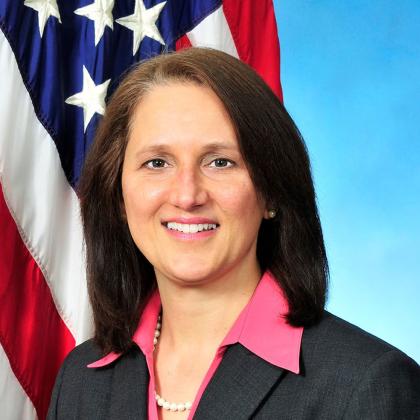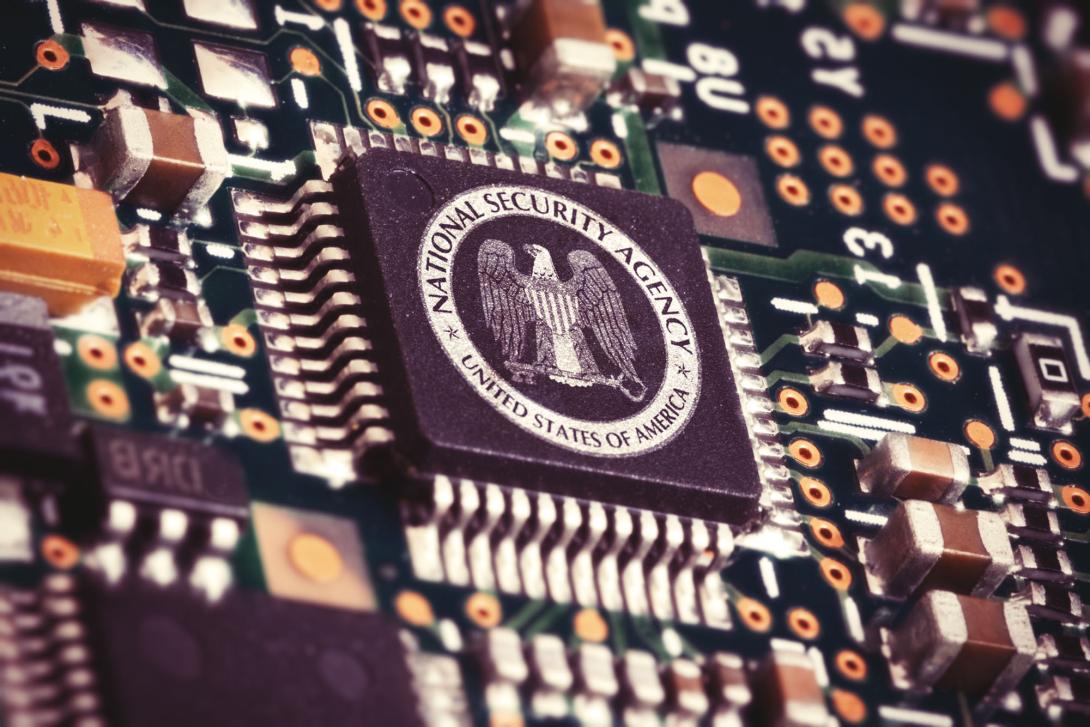How To Sell NSA Technology
Journalists often end an interview with some version of the same question: what would you like to add? Linda Burger, director of the National Security Agency’s (NSA’s) Office of Research and Technology Applications (ORTA), seized that opportunity in a recent SIGNAL Media interview.
“One last piece I’ll throw in there is that if you’re a businessperson reading this article, look at federal labs. We are a treasure chest of goodness and patented inventions and federally funded capabilities available to your company. Don’t hesitate to reach out to the lab. If you’re not sure what lab might have a technology you need, contact the Federal Laboratory Consortium at federallabs.org,” she urged.
The NSA and all other federal laboratories have an ORTA to foster technology transfers. “Our mission is to create partnerships and ignite innovation … to apply technology transfer legislation to the benefit of NSA’s mission,” Burger explained. “Technology transfer is about the exchange of knowledge, capabilities and research breakthroughs between federal laboratories and external partners. We do this through putting together legally binding agreements between federal labs—NSA in its entirety is a federal lab—and those external partners.”
In 2023, the federal government invested a total of $190 billion for research and development in an array of technology areas, including national security, transportation, energy, and health and human services. That investment has grown every year to $210 billion in 2024, Burger noted. When a lab develops a new capability, it can release the technology as an open-source solution freely available to everyone, or it can patent the technology and then license that patent.
“We put these licenses together to allow the rights to be granted to commercial partners so that they can take these basic research and foundational discoveries and move them into the marketplace. Even if it’s something that we’re using 100% operational here in the Department of Defense, it’s not necessarily ready for prime time in the commercial sector, so we need our commercial partners to be able to take federally funded innovation and move it into the marketplace.”
Burger’s team supports the NSA mission with a focus on foreign signals intelligence and cybersecurity solutions. “All of our patented technologies, and all of our open-source capabilities are in that space, one of the two. They definitely follow and align closely with our mission space,” she said. “And then in our portfolio, we have five different categories: physical security, Internet of Things, mobility, cybersecurity and data science are the five groupings within our patent portfolio.”
The transferred technologies are dual use, meaning they can benefit both the commercial and military markets. Making government-funded technologies available to companies offers multiple benefits to include enhancing national security, fostering innovation to give the United States a competitive edge, creating jobs and boosting the economy. “When we do that, those companies might create new jobs, new companies, new products, or they might enhance existing products, all with this federally funded innovation, and that helps grow our economy and enhances our national security,” Burger offered. “The big picture is we’re maintaining our country’s technological leadership and economic growth.”
The Defense Department commissions annual statistical studies from Montana State University’s TechLink Center on the impact of ORTA-related technology transfers. “We provide them with our patent license, the companies and the points of contact, and they go do the rest, and then they issue a report,” Burger said.
The most recent study from 2021 reported that the Department of Defense provided a positive gain economic impact of $69 billion from technology licenses and created more than 240,000 jobs. NSA transfers provided $313 million for economic growth and created more than 1,800 jobs. “That’s growing the economic pie, and that goes to the economic security of our nation,” Burger noted. “The government’s not creating the jobs. The government is not creating that economic growth. But the licensees of our technology are.”
One of the agency’s most widely adopted technologies is an open-source reverse engineering tool known as Ghidra, which was released at the RSA conference in 2019. An NSA announcement about the release said Ghidra makes the software reverse engineering process more efficient and helps level the playing field for cybersecurity defenders, especially those just starting out. Ghidra was built to “solve scaling and teaming problems and to provide a customizable and extensible software reverse engineering platform,” according to the announcement. Free to everyone, Ghidra has been downloaded more than 1 million times.
Burger said the agency expects to soon release another tool, Behaviorial Simulation, or BSim, to complement Ghidra, which has now been released in version 11. BSim will allow analysts to find similarities in code. She described it as a “big feature from NSA in the technology space.”
She cites NiagraFiles, or NiFi, as another open-source technology transfer success story. Now used by thousands of companies, NiFi is a data management tool that provides a way to stream rapidly flowing data across systems for automated storage, management and manipulation in real time. Its release was one of the earliest examples of a Defense Department agency releasing source code to the open-source software community, and in 2020 earned Burger’s team a George F. Linsteadt Technology Transfer (T2) Achievement Award.
The ORTA transfers hardware as well as software. PadJack Inc., owns multiple patents from the agency, including one for a plastic data port plug. “At the physical layer at the data port, they’re like plastic plugs that go in to protect against exfiltration of data and or insertion of malware. They protect against unauthorized use, and they’re tamper-evident, so if someone does access a port that’s protected by one of our port protectors, you’ll know.”

One last piece I’ll throw in there is that if you’re a businessperson reading this article, look at federal labs. We are a treasure chest of goodness and patented inventions and federally funded capabilities available to your company.
The ORTA team also works with ArmorxAI, an anti-ransomware firm, to transfer a virtual perimeter tool to protect against ransomware. “That company is early stage, pre-product. That’s another way that we’re sharing some of these early-stage innovations and they’re being moved into the commercial market space by our partners,” she offered.
And another pre-product company known as Invary owns an exclusive license for a kernel integrity management capability developed at the agency. The technology provides visibility into the operating system software and detects any unauthorized changes.
An additional benefit to making military technology widely available is that it expands the talent pool for the agency to hire from. “We are able to go online, and we look for NiFi developers or Ghidra developers. Those are six-figure jobs, and those skill sets didn’t exist before, except for in-house,” Burger stated.
Although ORTAs were created by legislation passed in 1980, some haven’t used all of the tools or authorities available to them. Burger’s office, for example, didn’t begin using funded cooperative research and development agreements (CRADAs) until fiscal year 2018. The agreements allow an external partner, such as a business, to provide funding to the government for an exchange of resources, capabilities and subject matter expertise.
“Funded CRADAs were in place since tech transfer legislation happened in the 1980s, but we had not activated them here. On my watch, we have activated those authorities. Now NSA is able to use that authority, which is a really powerful authority. It allows us to fully share the cost of research and development and share resources,” she said.
She also has initiated an innovator recognition program to thank those throughout the agency who are using the technology transfer services, creating intellectual property for the agency or creating agreements and partnerships.
Burger explained that sometimes authorities such as funded CRADAs go unused simply because of a lack of personnel with the “bandwidth” to start the process. “It takes time and effort to activate things. In that case—the first funded CRADAs, specifically—we had to have the language we needed to enable the money to come in.”
They worked with another ORTA to learn what language to include in the funded CRADAs but still didn’t have the in-house expertise for the financial management of the very specialized, unique funds. “No one else does this kind of thing, except for an ORTA. So, we found experts at the Army Research Lab, finally, who were able to help our financial team, and we’re still helping other labs learn how to do this. It’s about sharing the know-how and making sure that everyone’s able to leverage the authorities to the best of their ability.”
Burger’s team is currently working with TechLink under a Defense Department partnership intermediary agreement, or PIA. It will allow TechLink to act as an intermediary in developing business plans needed to issue a patent license. “We cannot issue a patent license without a development plan, and that’s often a sticking point for businesses because they don’t know what we need,” she elaborated. “So, when we have a prospective licensee coming to us, we can connect them with a person at TechLink to help our prospective licensees meet this requirement. And that’s been almost 100% successful.”
Her office has seen a dramatic increase in the number of technology transfer agreements. “Over time, we’ve grown those, almost tripled them now. Next year, we might actually get to that that number.”
The agency has a publicly accessible portfolio of about 120 patents available for licensing and has more to add. Because patents can be 10, 20 or even 30 pages long, the ORTA portfolio condenses them significantly. “We need to have all of our issued patents in there, and they’re not there now. So, one of the primary focuses for us right now is to make sure that all of our issued patents get out there in that format,” she said.
Burger indicated her priority for the next year remains the same as in previous years. “It’s always more tech transfer applications for me.”






Comments